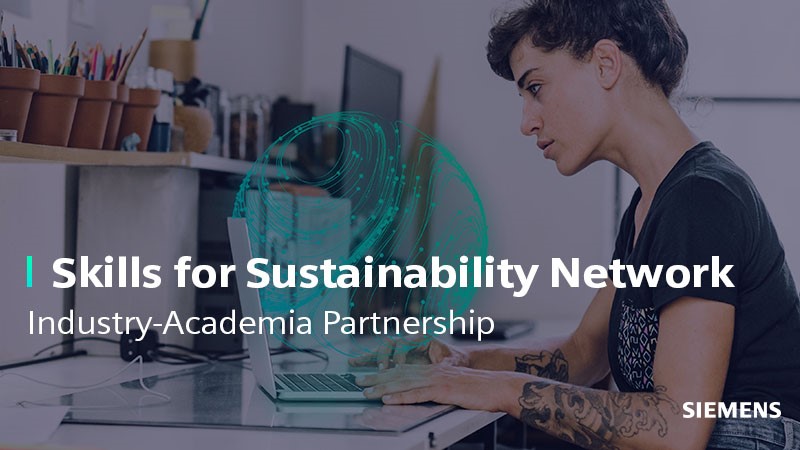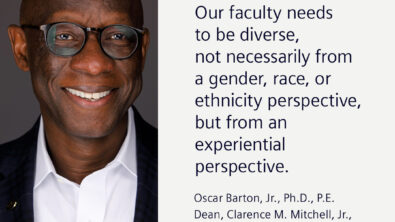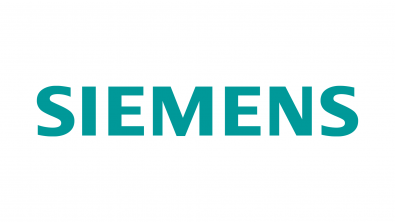Skills for Sustainability Network – October Roundtables

What mindset, skills and tools do students need to learn, and how, to bring and keep the circular economy in the workplace?
Introduction
The 2016 launch of The United Nations’ 17 Sustainable Development Goals (SDGs), saw industry and society welcome a universally recognizable framework for addressing some of the greatest challenges we face as humankind. As the industry’s efforts to implement viable actions grow, so do expectations that each new generation of graduates will bring the relevant skills and mindset needed to make a credible impact.
Formed in 2022, the Siemens Skills for Sustainability Network has the ambition to support educators in our common goal of enabling the global workforce of the future to develop innovative sustainable solutions that drive the circular economy – a pivotal discipline to deliver the SDG commitments.
This October, in two online roundtable discussions and one in-person session held at SEFI, we asked industry and faculty from around the world to discuss the mindset, skills, and tools that students need to drive circularity in industry. Together we explored the role of the faculty, students, and industry in creating a more sustainable and circular mindset.
What mindset, what skills, and what tools do students need to learn, and how, about the circular economy?
Participants came up with many ways that students can learn and practice circularity in their engineering programs. Several spoke about the mindset shift that needs to happen not only for students but also for university faculty and industry, as well. A major point was the importance of systems thinking – students need to be taught to look at the entire supply chain when making decisions about sustainability and circularity. Building solutions that use locally available resources and suppliers was another key theme, and multiple participants suggested project-based learning as a key to consolidating theoretical knowledge into actionable skill. As well as these themes for addressing circularity in the classroom, participants returned several times to the importance of getting students involved in both existing industry and entrepreneurial activities. The consensus was clear that there’s no single road to sustainability and imbuing students with the skills, knowledge and mindset to change the way businesses operate is an all-hands effort.
Values and Mindset Changes
Participants discussed multiple ways of adjusting student mindsets. One major point was that sustainability mustn’t be ‘tacked on’ to all that we currently teach, rather, there needs to be a radical shift in how we teach problem solving. Students need not only to be taught a new approach to solving problems but also encouraged to help reshape the very values fundamental to the practice of engineering, so that they can champion sustainability in their careers.
“People have to examine their own assumptions and then look at transforming those to a very different way of seeing the world, a very different way of seeing themselves as consumers, a very different way to the way they see themselves as engineers.”
Corrinne Shaw, Senior Lecturer, University of Cape Town, South Africa
Crucial to the proposed shift in mindset is the ability to help future engineers center social and environmental responsibility within their practice. Educators can teach sustainable practices and skills but must also create space and opportunity for deep enquiry into the core values required to successfully do this work. Students must understand their responsibility as designers of products, processes and systems.
“So, for manufacturers who’ve always received revenue and received value when they’ve changed ownership of a good, that model is not a sustainability-driven model. It’s a take, make, dispose driven model. And if that’s what you’re optimized on, that’s what it’s going to drive you to.”
Eryn Devola, VP of Sustainability, Siemens DISW
Participants also felt very strongly that industry must change how they assign and derive value vis-à-vis sustainability and circularity. Companies often say they value sustainability in their messaging but ultimately select their materials and manufacturing practices without regard for the true cost to society or any negative, albeit unintended, externalities. Companies and markets need new ways to measure cost and value in order to get serious about sustainability.
Systems Thinking
Participants noted often that engineering has traditionally been a highly siloed practice and students often don’t understand the many steps that a product might go through before reaching a consumer, and the many factors that contribute to the sustainability or circularity of the final product. Students must be trained to think about all the resources and inputs required to design a product as well as the possibilities for the end of the product lifecycle. Environmental impacts in sourcing, testing, manufacturing, de- and re-purposing, as well as the social impacts like working conditions and living wages must be fundamental to product, process and system design. Students need to understand how to look at the ‘big picture’ and consider every step before and after a product is designed and manufactured.
“The knowledge of the materials from which products are made as well as the manufacturing processes they undergo before becoming products will greatly assist the students in understanding circularity and sustainability. It is necessary to change their mindset against the dangers of buy, use and dispose.”
Mohammed Dauda, Professor of Mechanical Engineering, University of Maiduguri, Nigeria
Students need to consider the entire process that a product goes through before it reaches the consumer. Many participants emphasized the importance of systems-level thinking as well as the importance of looking at the process and energy it may take to make a circular product. Products often seem sustainable because they reuse materials but may use large amounts of resources to be converted into a new form.
“You have to be able to apply a systems thinking approach to the problem and see the objectives and challenges in a wider frame, it’s critical to be able to synthesize information from different domains, not necessarily just your specialty, into what you’re trying to do.”
Francis McKinney, Head of Technology, Zenzic, UK
Gathering and integrating knowledge from a wide variety of specializations is necessary for students to fully understand the entire supply chain. Students will need to work with people outside of their field and recognize the limits of their own knowledge. Maintaining circularity and sustainability also need to be ongoing processes. Not only do manufacturers need to consider the end of life for their products, but the most sustainable method of manufacture can change based on shifting external factors.
Sustainability and Systems-Based Projects
Systems-based thinking should be introduced to students through real-world projects. Ideally, participants agreed that students should see these concepts as early as possible. First-year students should be immersed in projects that directly address circularity and sustainability, while project work done throughout the curriculum must incorporate systems thinking and sustainability as fundamentally as physics and mathematics. If students are to really integrate the importance of sustainability, it should be taught early and continually.
“With first-year engineering students, we try and present engineering as an endeavor that occurs within social contexts. Our approach is to introduce them to the concepts of production, of sustainable production, of their relationship with the environment.”
Corrinne Shaw, Senior Lecturer, University of Cape Town, South Africa
The first year is also a time when students should start to understand their role and responsibility in sustainable production and society. These ideas, brought to students when they first start learning engineering concepts, will shape the rest of the work they do in school as well as in their future jobs.
“When we are running any project, we can introduce the element of circular economy within the projects.”
Nicolau Morar, Lecturer in Manufacturing and Materials, City, University of London, UK
Educators shouldn’t stop with one project. Continuing to emphasize sustainability throughout the curriculum will help students understand that everything they do has environmental and societal impacts. Because there are so many aspects to making a sustainable product, students will need more than one opportunity to fully grasp the systems thinking and skills they need.
Students as Drivers of Change
Students also need to gain the mindset needed to become advocates for sustainability. This can be through small projects using local materials, or through creating entirely new businesses. Either way, students are the future drivers of change. Part of the mindset students need to create a sustainable and circular economy is the knowledge that they can lead change themselves.
“So, what is the economic answer? Entrepreneurship. We need new businesses; we need new companies. And this is what we could teach our students, to say, ‘Okay, I’ve got a new idea which is sustainable.’ Well then, be a founder and make your own business out of it.”
Jan Robert Ziebart, Professor of Applied Sciences, FH Bielefeld, Germany
Students will become business leaders and start-up founders and can take what they learn about sustainability into those companies. Sustainable companies will drive the future and current students will be the ones leading the way in creating them.
“Students have to understand that there are different dimensions of problems, but the most important thing is solving the problem within their vicinity. If possible, first and foremost, solve the problem in your house, solve the problem in your community, and then try to look at the larger society and see how you can create a huge social impact.”
Mohammed Dauda, Professor of Mechanical Engineering, University of Maiduguri, Nigeria
A major factor in sustainable innovation is using local resources to create new businesses and products. Students should be encouraged to start with local problems as well as local solutions. Starting small and local is much more accessible to students but these solutions can be used to solve other problems in new and innovative ways as well.
Continue the conversation on the Siemens Digital Industries Software Community…
This is our home for day-to-day interaction and exchange between members of the Skills for Sustainability Network. If you’re not already active on the Siemens Community, this is where you need to be not to miss relevant updates, opportunities, and resources.
If you don’t already have an active Siemens Community account, click ‘Create an account’.
Join the Siemens Skills for Sustainability Network!
If you’re not already a member of the Siemens Skills for Sustainability Network, register now to gain access to the many useful reports, resources and case studies shared by members as well as by Siemens, along with the opportunity to get involved in future dialogues.


